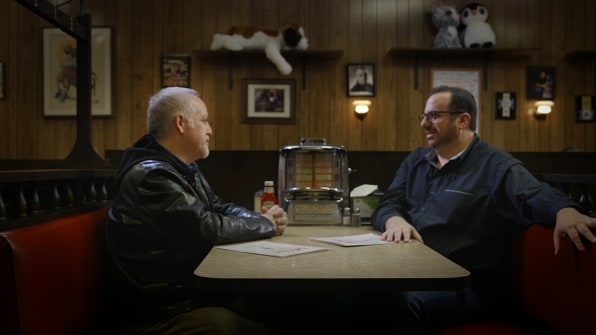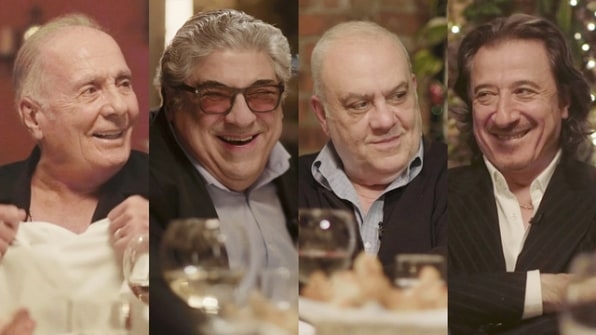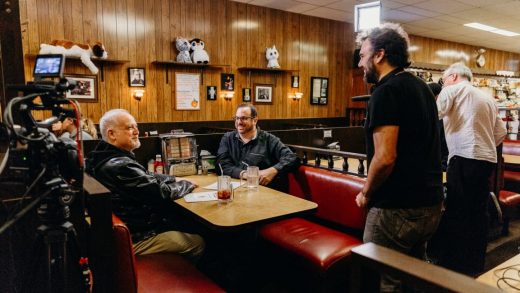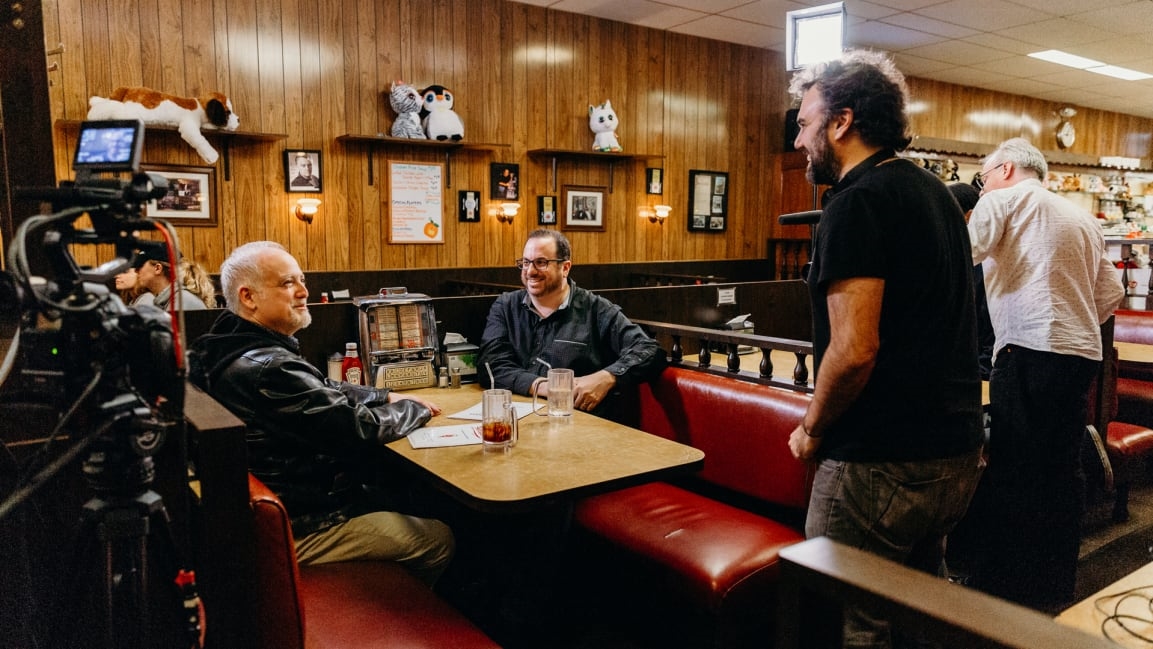Will you go back to a movie theater for more ‘Sopranos’? This filmmaker is betting on it
Kristian Fraga‘s new film series is nearly three hours long and mostly involves people sitting in chairs talking. But the director is convinced it’s a film that will get audiences back in theaters, where it is being shown starting on May 19.
There’s another hook too. The three-part documentary, being distributed by CineLife Entertainment, is about The Sopranos, so it’s essential viewing for fans of the seminal HBO show.
Fraga admits that to those who have no interest in Tony Soprano and his turn-of-the-century mobster malaise, Sopranos Sessions “will be like watching paint dry.” But his hope is that the film will also tap film and TV lovers interested in the craft of visual storytelling and the creative process of someone such as series creator David Chase, and that its intimate, pared-down nature will be a draw for theatergoers who have been pent up at home during COVID-19.
“I don’t have vistas or camels or spaceships,” Fraga says. “But the immediacy of the big screen and the experience of being in a theater where there are no distractions—you kind of get into the zone of the conversation.”

There are many conversations. Inspired by the book by TV critics Alan Sepinwall and Matt Zoller Seitz, Sopranos Sessions kicks off with a tête-a-tête between the two scribes at Holsten’s, the New Jersey diner where Tony Soprano and famiglia shared their last meal on the show’s enigmatic (and still much-debated) finale. Fittingly, Sepinwall and Zoller Seitz, who met as whippersnapper critics at the Newark Star-Ledger—they bonded over their love of TV shows and movies, and Zoller Seitz’s Brando impressions—kick their conversation off over a serving of fried onion rings, another nod to the finale. They talk about discovering the new HBO show that was filming in their backyard; James Gandolfini’s soft center (when Zoller Seitz gave him a copy of The Very Hungry Caterpillar for Gandolfini’s newborn child, Gandolfini read it page by page in front of Zoller Seitz, marveling at the story); and, of course, the meta meaning behind Chase’s vision.
Part two in the tryptic is also centered around food, this one a rollicking, wine-filled Italian meal among four actors from the series: Federico Castelluccio (Furio Giunta on the show), Vincent Pastore (“Big Pussy”), Arthur J. Nascarella (Carlo Gervasi), and Vincent Curatola (Johnny “Sack” Sacramoni).

The final chapter features Sepinwall and Zoller Seitz interviewing Chase.
Fraga says that his desire was to get into the minds of the people who made The Sopranos, as well as those who have analyzed it for years, and let the conversation play out in a raw, candid way. “My basic conceit was to strip everything away,” he says. “There are no clips of the show. It’s just these guys and the rhythm of the conversation. I wanted to put the audience in the booth [at Holsten’s].
“I wish someone had made this kind of show with Rod Serling [creator of The Twilight Zone]. I would have loved to have seen that. I’m a fan of The Sopranos, but my passion for the show comes more from the filmmaking side—how David Chase pulled this off. I wanted to dissect what it is about this show that I believe taught a whole new way of watching narrative TV. It opened up a lot of stuff that was happening on TV and kind of elevated it.”
At the very least, Fraga hopes people will be inspired by the film’s distinctly pre-COVID-19 vibes. “Cinema, food, and good conversation are, at least for me, the three greatest things on earth,” he says. “So I thought, gee, if I could capture that, I think a lot of people” would be interested. “This was made when you could just go into a restaurant and eat. It’s what we’d do. Get together, have a beer, talk, and hang out. So who knows? Maybe nostalgically, people will say: That’s the way it used to be for all of us.”
(11)



